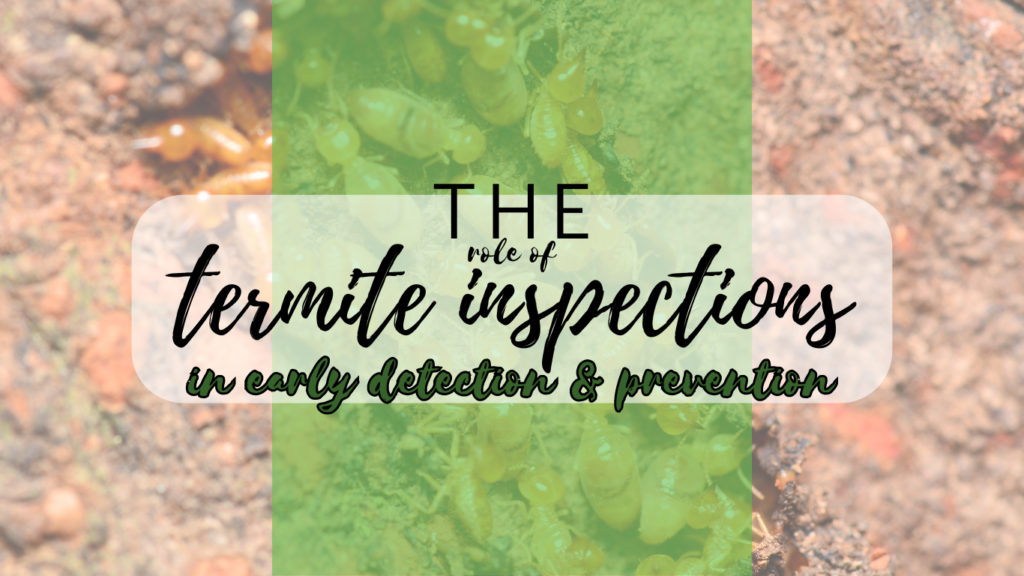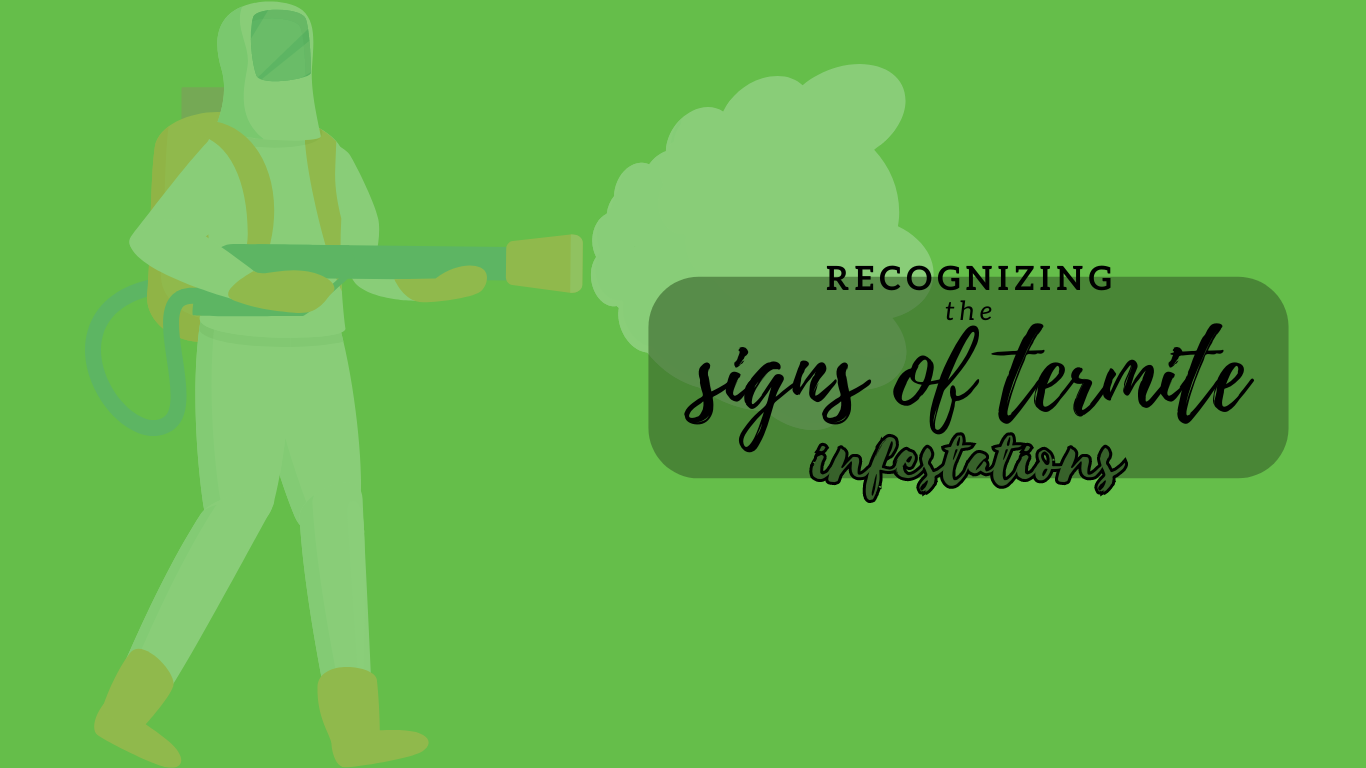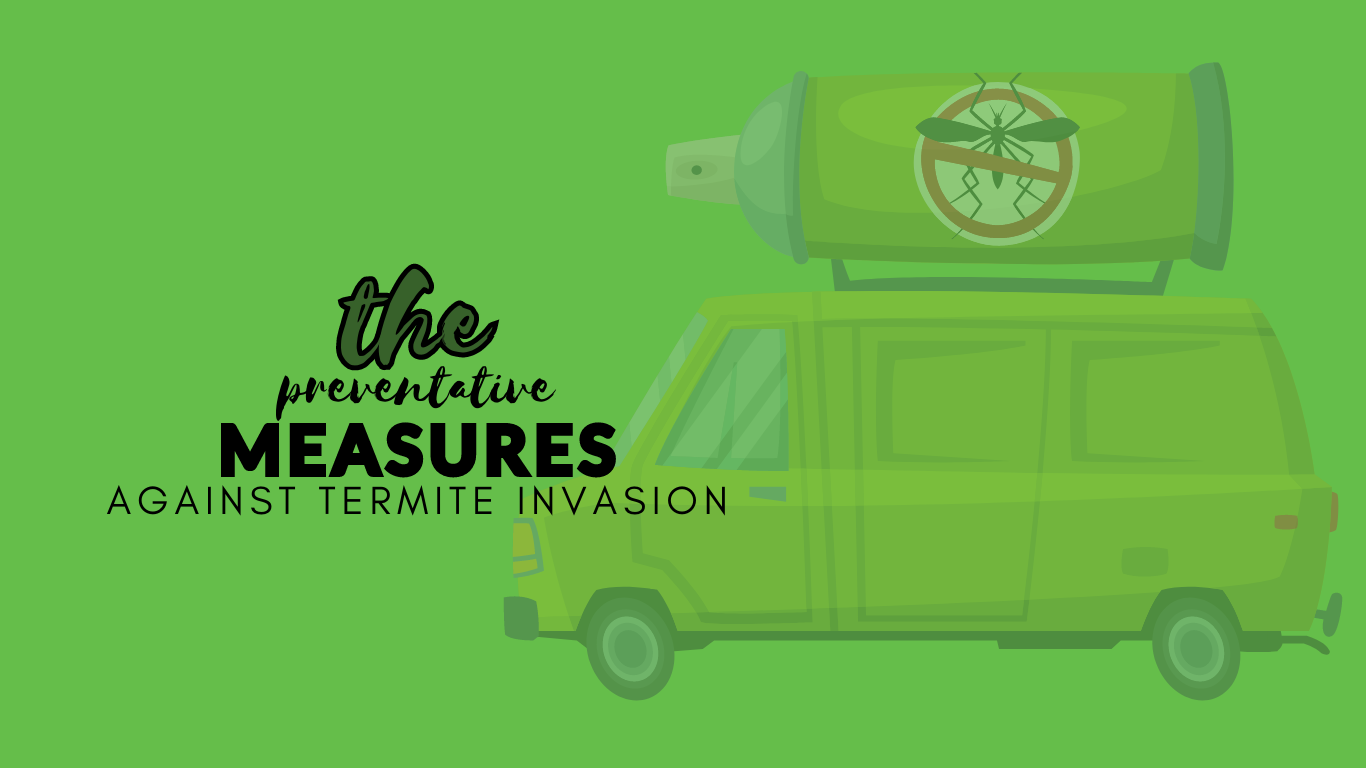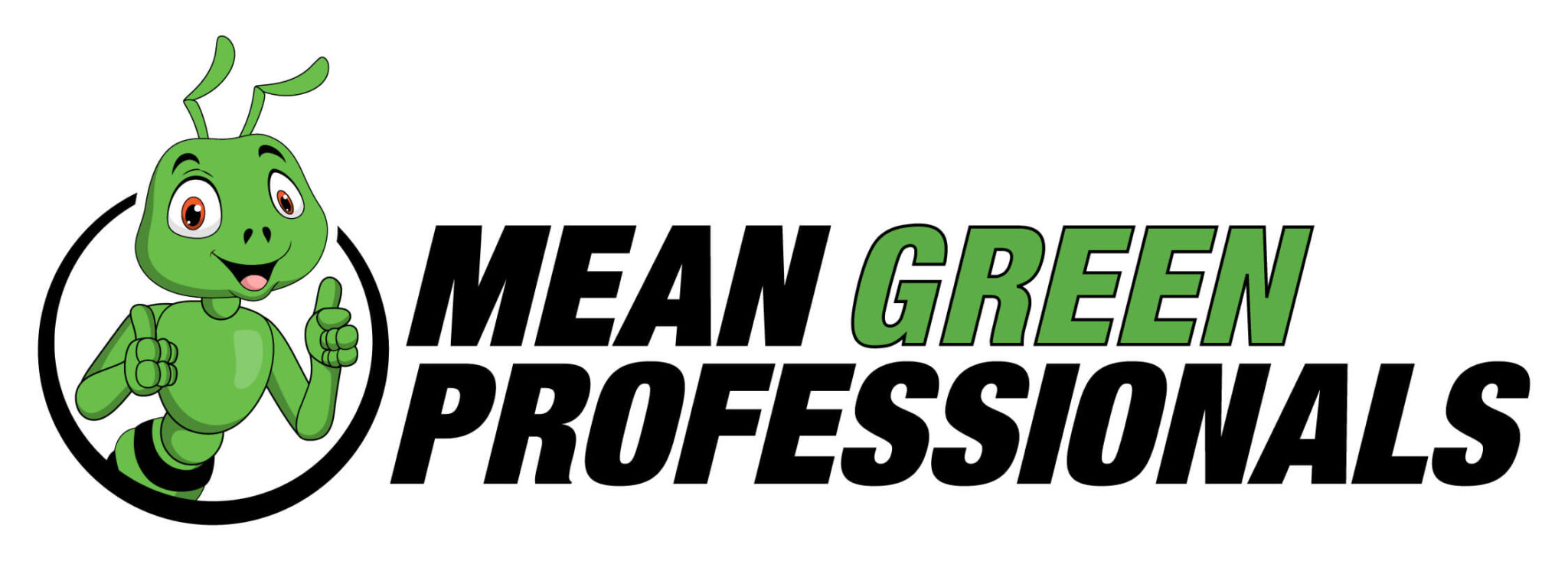
The role of termite inspections in early detection and prevention cannot be overstated.
Termites are one of the most destructive pests homeowners in Smyrna, Tennessee, can encounter, causing extensive damage that often goes unnoticed until it’s too late.
Through this post, you’ll learn about the role of termite inspections in early detection and prevention by going over the importance of regular termite inspections and how they help in spotting signs of termite activity early on.
You’ll gain insights into the estimated annual damage caused by termites and what a professional termite inspection entails.
We will also explore ideal conditions for termites to thrive, including common environmental factors that attract these destructive pests.
Moreover, we will investigate strategies to deter termites from taking up residence in your abode.
Recognizing signs of termite infestation early is crucial for timely intervention; thus, we highlight key indicators such as mud tubes and structural joint damage.
Furthermore, understanding the difference between ants and termites could save your property from significant harm.
In general, our discussion underscores the role of termite inspections in early detection and prevention—essential knowledge for keeping your home safe from these insidious invaders.
Table Of Contents:
- The Importance of Regular Termite Inspections
- Identifying Ideal Conditions for Termites
- Recognizing Signs of Termite Infestations
- Differentiating Between Ants And Termites
- Preventive Measures Against Termite Invasion
- FAQs in Relation to the Role of Termite Inspections in Early Detection and Prevention
- What are the benefits of termite inspections?
- How often should a home be inspected for termites?
- What signs indicate a termite infestation?
- What methods do pest control professionals use to detect and prevent termite infestations?
- How can homeowners reduce their risk of a future termite infestation?
- Are there any alternatives to using harmful chemicals in pest control?
- What are some other common pest infestations besides termites?
- Can DIY pest control methods be effective?
- What are some credible sources for pest control information?
- Early detection and prevention of termite infestations are crucial for protecting your property, and regular termite inspections conducted by professionals play a vital role in identifying and addressing potential issues proactively.
The Importance of Regular Termite Inspections
Termites are notorious for their destructive nature, causing an estimated $5 billion in damages annually.
These tiny insects can eat away at your home’s foundation, leaving you with a hefty repair bill.
That’s why it’s crucial to schedule regular termite inspections to catch any potential infestations early on.
Estimated Annual Damage Caused by Termites
Termites cause a staggering $5 billion in damages each year across the United States.
That’s a lot of wood-chewing.
Consequently, it’s essential to take proactive steps in order to avoid costly termite damage and removal that are not usually covered by homeowners’ insurance.
Duration and Components of a Professional Termite Inspection
A professional termite inspection typically takes between 30 minutes to two hours, depending on the size of your home.
During the inspection, the inspector will thoroughly examine both the interior and exterior areas of your property, including crawlspaces, basements, attics, garages, and outdoor landscaping elements like fences or sheds that could potentially harbor termites.
In addition to visual checks for signs such as mud tubes or damaged wood structures indicative of active infestations, inspectors also use termite bait stations containing insecticides specifically designed for killing termites.
Baiting stations serve dual purposes: they eliminate existing colonies while acting as monitoring tools providing valuable data about local termite activity levels and helping pest control professionals devise effective treatment strategies tailored specifically towards individual property needs.
Note: At Mean Green Pest Pros, we prioritize eco-friendly solutions over traditional chemical-based treatments whenever possible.
Our baiting stations contain organic ingredients with natural insect-repelling properties instead of dangerous chemicals like pyrethrum often found in conventional pesticides, ensuring the safety of residents and pets alike during the entire process from initial inspection through the final treatment phase.
Termites can cause significant damage to homes, resulting in expensive repairs. Regular termite inspections are crucial for early detection and prevention of infestations. Professional termite inspections typically last between 30 minutes to two hours and involve a thorough examination of both the interior and exterior areas of your property, including baiting stations containing organic ingredients with natural insect-repelling properties instead of dangerous chemicals like pyrethrum found in conventional pesticides.
Identifying Ideal Conditions for Termites
Termites are sneaky little destroyers that can chew through wood, flooring, and even wallpaper without being noticed.
They love certain conditions that are often found around homes and other structures.
Knowing these conditions can help you prevent a termite infestation before it starts.
Common environmental conditions that attract termites
The first step in preventing a termite invasion is recognizing the ideal environment for them to flourish.
According to the Environmental Protection Agency (EPA), termites prefer warm, damp environments with plenty of food sources nearby – primarily cellulose-based materials like wood, paper, or cardboard.
- Moisture: Termites need moisture to survive. Areas with excess water from leaks or poor drainage are perfect breeding grounds for these pests.
- Wooden Structures: Wood provides an abundant source of food for termites. This includes not just your home’s structure but also firewood piles, tree stumps, or wooden debris near your property.
- Poor Ventilation: Poorly ventilated areas create humid environments which attract termites by providing them with the necessary moisture they require to thrive.
How addressing leaks or moisture issues prevents termite invasions
To make your property less attractive to termites, address any potential sources of excess moisture promptly.
Leaky faucets and pipes should be repaired immediately upon discovery.
Similarly, gutters and downspouts should be kept clear, allowing water to flow away from the foundation and minimizing the chances of attracting unwanted guests.
Standing pools of water on roof eaves or air conditioning units causing dampness in walls could potentially lead to infestations and must be addressed in a timely manner.
In addition, sealing gaps and cracks around the house, especially where utility lines enter, helps keep out insects, including those pesky invaders looking to establish colonies within the cozy confines of your abode.
By maintaining a dry, well-ventilated environment and using dehumidifiers in basements and crawlspaces if necessary, you’re making your home a far less inviting place for unwelcome critters to set up shop, thus reducing the risk of experiencing the costly and damaging effects associated with unchecked termite activity.
Besides taking care of physical barriers against entry, one of the most effective ways of deterrence involves keeping your yard clean and free of clutter, particularly organic matter such as fallen leaves, branches, and compost heaps.
All of these serve as a buffet for hungry subterranean termites swarm seeking new nesting sites in close proximity and easy access to their primary target – your dwelling itself.
Maintaining a tidy yard is essential for warding off pests, as it deprives them of potential nesting sites and keeps your dwelling safe.
Termites thrive in warm, damp environments with plenty of cellulose-based materials nearby. To prevent termite infestations, address sources of excess moisture promptly and keep your yard clean and free of the clutter that could serve as a food source for termites. Sealing gaps and cracks around the house can also help keep out insects looking to establish colonies within your home.
Recognizing Signs of Termite Infestations
Preventing a termite infestation starts with knowing what to look for.
Termites are sneaky creatures that can cause significant damage before they’re even detected.
By recognizing the signs of an infestation early, you can take action and prevent further destruction.
Mud Tubes as Indicators of Subterranean Termite Activity
Subterranean termites build mud tubes as protective termite tunnels from their colony in the soil to their food source, which is your home.
These mud tubes are often found on interior or exterior walls, providing a clear sign of termite activity.
They resemble thin lines of dirt or mud about the width of a pencil and serve as one of the most common indicators that your property may be under attack by these destructive pests.
Structural Joint Damage Caused by Termites
In addition to mud tubes, another sign indicating termite presence is structural joint damage where wood appears rippled due to tunnels running parallel along grain patterns within timber structures.
This type of damage typically occurs when termites eat through wood, weakening it over time and causing noticeable changes in its structure.
If you see any such ripples or hollowed-out sections in your wooden furniture or building components, it’s likely that termites have been at work.
It’s important not only to treat this problem but also to repair any damaged areas immediately since weakened wood could lead to more serious structural issues down the line.
Droppings Near Baseboards and Door Frames
Besides physical damage on wood caused by tunneling activities, frass – which refers specifically to termite droppings, provides another clue toward potential invasion.
Frass usually looks like small piles of sawdust near baseboards and door frames where termites have been active.
Visible Changes in Paint Surfaces, Including Bubbling and Peeling
A less obvious but still significant sign includes visible changes in paint surfaces, including bubbling and peeling due to moisture accumulation resulting from underlying termite activity.
If left unchecked, this seemingly minor issue might escalate into severe problems necessitating costly repairs later on.
Hence, if you notice unusual alterations occurring with painted surfaces, especially those covering wooden materials, consider getting a professional termite exterminator to help promptly.
Note: Paying attention to these signs helps homeowners detect possible invasions earlier, enabling timely interventions to mitigate potential risks associated with extensive damages inflicted upon properties by uncontrolled populations.
This section discusses the importance of recognizing signs of termite infestations for early detection and prevention. Signs include mud tubes, structural joint damage, droppings near baseboards and door frames, and visible changes in paint surfaces. Homeowners who pay attention to these signs can take timely action to mitigate potential risks associated with extensive damages caused by termites.
Differentiating Between Ants And Termites
Accurately distinguishing between ants and termites is essential for successful pest control.
Misidentifying pests can lead to ineffective treatment strategies and continued infestations.
Ants and termites can often be confused due to their similar size and looks.
Physical Differences Between Ants and Termites
The key difference lies in their physical characteristics.
Both reproductive members of ant and termite colonies develop wings during certain stages of their life cycle, leading many homeowners to confuse one for the other when they encounter winged insects inside or around their property.
Reproductive termites, however, have straight antennae, while ants possess bent ones – a distinct difference that aids in identification purposes.
Another notable distinction is that termite wings are all equal in length, whereas an ant’s front pair of wings are longer than its rear pair.
Beyond these anatomical differences, there are also behavioral traits unique to each species which further aid in accurate identification:
- Nesting Habits: While both species build nests, only termites construct mud tubes as sheltered passageways from the nest site to food sources such as wood structures within your home.
- Eating Habits: Termites feed on cellulose-based materials like wood, while most ants prefer sweet substances or proteins found commonly in household foods.
- Swarms: Termite swarms usually occur during warmer months when reproductive members leave the colony seeking mates for establishing new colonies elsewhere – leaving behind discarded wings that may be mistaken for flying ants despite clear distinctions upon closer inspection.
Misidentification Leads To Ineffective Treatment Strategies
Mistaking one insect for another can result not just in wasted time but also wasted resources if incorrect treatments get applied based on faulty identifications.
For instance, baiting stations designed specifically against termites by Mean Green Pest Pros would prove ineffective against an actual ant infestation since different pesticides target different types of insects with varying degrees of success depending on specific biological vulnerabilities inherent within each species group.
This underscores the importance of proper pest identification prior to initiating any form of treatment strategy aimed at eliminating unwanted guests from your property.
Remember, correct diagnosis is the first step towards a successful cure.
Contacting Professionals For Accurate Identification And Effective Treatments
If you’re unsure whether you’re dealing with an ant or termite problem – or even some other type of pest – it’s always best practice to contact a termite control company that possesses the necessary expertise to accurately identify offending creatures and provide appropriate solutions tailored to meet individual needs and circumstances surrounding a given situation.
With the eco-friendly approach adopted by Mean Green Pest Pros using organic ingredients and natural insect-repelling properties instead of dangerous chemical insecticides like pyrethrum, rest assured knowing the health and safety of your loved ones won’t be compromised in the pursuit of effective pest elimination efforts.
So why wait? Contact us today, and let us help you reclaim peace of mind and comfort in your own home.
Differentiating between ants and termites is crucial for effective pest control. Termites have straight antennae, construct mud tubes as sheltered passageways, feed on cellulose-based materials like wood, and swarm during warmer months. Misidentification can lead to ineffective treatment strategies, so it’s important to contact professionals for accurate identification and eco-friendly solutions tailored to individual needs.
Preventive Measures Against Termite Invasion
To prevent termites from invading your property, take several steps.
Eliminate excess moisture, fix leaks immediately, seal gaps around water and gas lines, and monitor wood brought into the home.
These measures play a significant role in preventing potential infestation.
Eliminating Excess Moisture
The first step to termite prevention is eliminating excess moisture around your home.
Termites are attracted to moist environments; they need it for survival.
Therefore, fix any sources of water leakage, such as faulty plumbing or poor drainage, promptly.
- Maintain gutters: Clean out your gutters and downspouts regularly to ensure proper drainage away from the foundation of your house.
- Landscape grading: Direct the slope of your landscape away from the house instead of towards it.
- Air conditioning units: Ensure that AC condensation lines are directed away from the foundations of your building.
Regular Monitoring Practices
Regular inspections can help detect signs of an infestation early on before substantial damage occurs.
Inspect all wooden structures in and around your property for any signs of termite activity, such as mud tubes or frass (termite droppings).
- Closely monitor firewood storage: This is one common way termites get introduced into homes unknowingly. Always store firewood at least 20 feet away from buildings and keep them off the ground using racks if possible.
- Pest control professionals: Hiring professional pest controllers like Mean Green Pest Pros who use eco-friendly solutions can greatly reduce risks associated with harmful chemical insecticides while ensuring thorough inspection services. They offer comprehensive service packages, including periodic checks, which not only eliminate existing pests but also prevent future invasions making sure you stay worry-free about potential threats.
Implementing preventive measures combined with regular inspections will significantly decrease chances for termite invasions protecting both structural integrity and value properties.
Remember, proactive actions always outweigh costs related to repairs and damages caused by unchecked infestations.
So take action today to protect tomorrow.
The article provides tips for preventing termite infestations, such as eliminating excess moisture and regularly monitoring wooden structures for signs of activity. It also suggests hiring eco-friendly pest control professionals like Mean Green Pest Pros to ensure thorough inspections and preventive measures are taken. Taking proactive actions can save costs related to repairs caused by unchecked infestations in the future.
FAQs in Relation to the Role of Termite Inspections in Early Detection and Prevention
What are the benefits of termite inspections?
Early detection, prevention of extensive damage, and maintaining property value are the main benefits of termite inspections.
How often should a home be inspected for termites?
For early detection and prevention, a home should be inspected for termites once every year.
What signs indicate a termite infestation?
Mud tubes on walls, hollow-sounding wood, and discarded wings from swarmers are potential signs of a termite infestation.
What methods do pest control professionals use to detect and prevent termite infestations?
Pest control professionals use visual inspections, moisture meters, masonry drills, and soil treatment rods to detect and prevent termite invasions.
How can homeowners reduce their risk of a future termite infestation?
Homeowners can reduce the risk of future termite invasions by eliminating excess moisture, sealing gaps around water and gas lines, and monitoring firewood closely.
Are there any alternatives to using harmful chemicals in pest control?
Yes, there are eco-friendly pest control brands and products available that use natural ingredients to control pests.
What are some other common pest infestations besides termites?
Common pest infestations include ants, cockroaches, bed bugs, and rodents.
Can DIY pest control methods be effective?
DIY pest control methods can be effective for minor infestations, but for larger infestations, it’s best to consult a professional pest control service.
What are some credible sources for pest control information?
Credible sources for pest control information include the National Pest Management Association, the Environmental Protection Agency, and the Centers for Disease Control and Prevention.
Early detection and prevention of termite infestations are crucial for protecting your property, and regular termite inspections conducted by professionals play a vital role in identifying and addressing potential issues proactively.
The role of termite inspections in early detection and prevention has been revealed!
Regular termite inspections are crucial for detecting and preventing potential damage caused by these pesky insects.
Identifying ideal conditions for termites, recognizing signs of infestations, and differentiating between ants and termites are all important steps in preventing invasions.
Eliminating excess moisture around homes and implementing regular monitoring practices can also help ensure safety against potential threats.
Don’t let termites take over your home – stay vigilant and take action to protect your property!
Contact Mean Green Pest Pros today to schedule an appointment!









